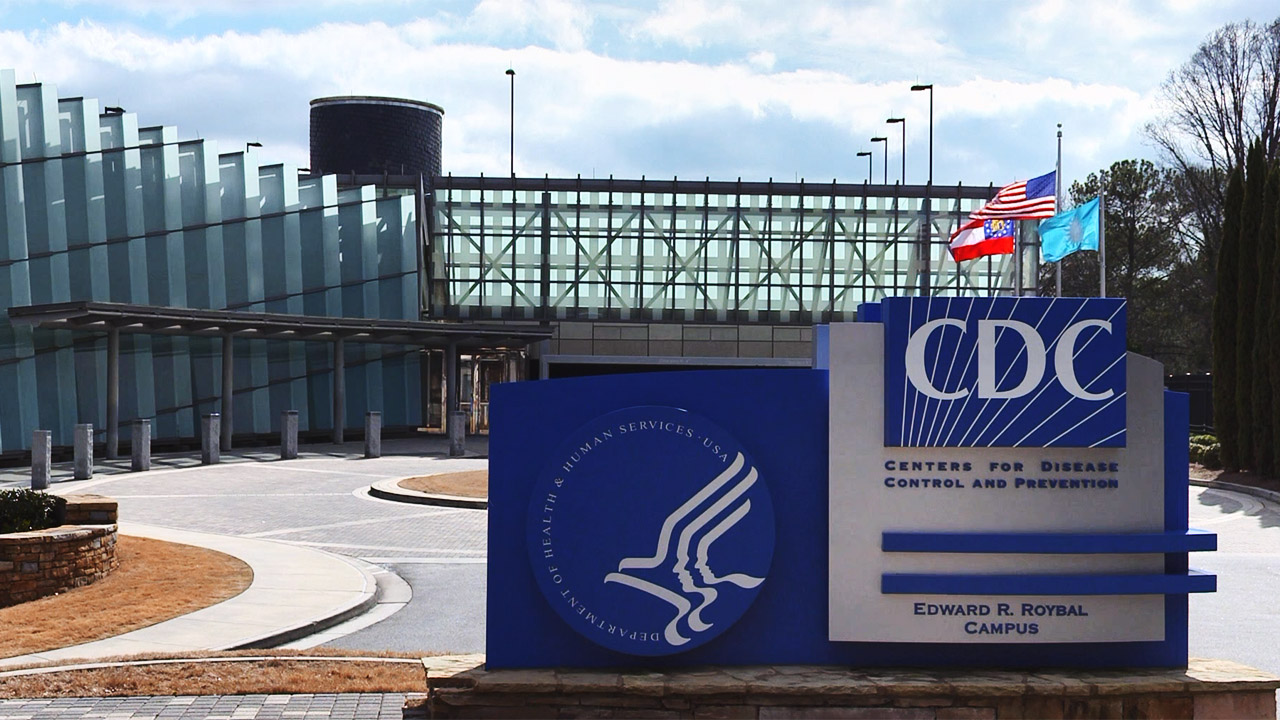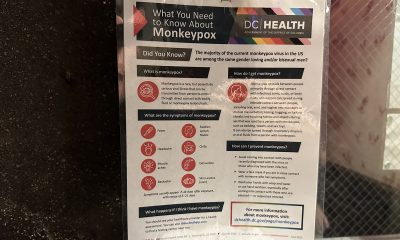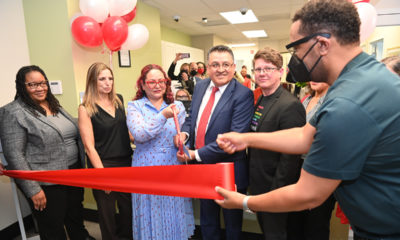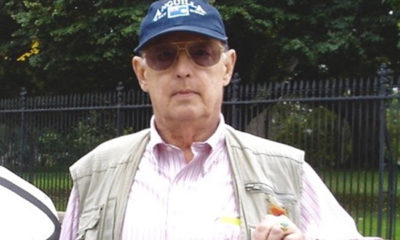Health
AIDS drugs cut off for Va. ADAP patients
Gay man dropped because T-cell count is ‘too high’

The Virginia Department of Health announced in December that 760 uninsured people with HIV who were being dropped from the state’s AIDS Drug Assistance Program due to a funding shortage could remain on the program until they found an alternative means of obtaining their medication.
But an undetermined number of Virginia ADAP clients who were dropped from the program during the past month have yet to be placed in an alternate program, and their supply of life-saving medications has run out, according to the directors of AIDS clinics in Fredericksburg and Fairfax County.
“Some of them are getting on other programs such as patient assistance programs from pharmaceutical companies and some of them are not,” said Zachary Hatcher, executive director of the Fredericksburg Area HIV/AIDS Support Services, a non-profit, community-based clinic similar to D.C.’s Whitman-Walker Clinic.
“And some of them are getting caught in this balance of not having enough medication to last them until they can get onto another program and they’re being taken off ADAP, which is very problematic,” he said.
Hatcher said Karen Berube, director of the INOVA Juniper Program, a non-profit clinic providing medical care to HIV patients in Fairfax County, told him she was seeing a similar development where dropped ADAP patients were running out of their AIDS drugs before being placed on an alternate program.
Berube couldn’t be immediately reached for comment. But sources familiar with the Metropolitan Washington Regional HIV Health Services Planning Council, which monitors ADAP issues in Virginia, D.C. and Maryland, among other areas, said they knew of dropped ADAP patients in Fairfax who had run out of drugs before being placed in another program.
Last week, Dr. Maureen Dempsey, the department’s deputy chief for public health, said the cutback in the ADAP program was designed to ensure that no one would be dropped and lose access to their drugs until they were placed in an alternate program.
This week, when the Blade made a follow-up inquiry after information surfaced that people were being dropped from the program without being placed in alternate programs, Dempsey said in a written statement that the department “will not transition a client without making every effort to contact them and provide assistance.”
She said in the statement that efforts to help clients “can be difficult” if the client initially provided inaccurate contact information. She said problems in transitioning to another program also arise if the client or their medical provider “encounter difficulties with signing and providing the necessary information within the timeline.”
Hatcher said clients sometimes encounter difficulties providing detailed financial information required by drug companies that offer drugs to former ADAP patients through Patient Assistance Programs or “PAP.” But he said clients in his and other clinics have case workers available to assist the patients and he did not believe this was the principal reason Virginia ADAP patients haven’t been able to find alternate programs.
A gay male resident of Fauquier County, Va., who is a client of the Fredericksburg Area HIV/AIDS Support Services clinic, said he’s been scrambling to find an alternate drug assistance program since December. At that time, a Virginia Department of Health employee informed him in a phone call that he had been dropped from ADAP, said the man, who spoke on condition that he not be identified.
“She wouldn’t give me her name or a way to contact her,” he said. “I kept calling and calling and calling,” he said, in a desperate attempt to find out why he was being dropped and who he could turn to continue to obtain the medication that has kept him healthy for nearly 10 years.
“The only thing they said early on was that they deemed that I was too healthy because my numbers are fairly strong,” the man said, referring to his T-cell counts, which measure the effectiveness of the body’s immune system.
When he finally received a letter from the state health department, it said the funding cuts had forced the department to decline his application to become a new ADAP client.
“I tried to tell them I was already in the program and that you dropped me,” he said. “So they’re telling the public that they won’t drop you until you’re placed in another program. That’s just a lie.”
Hatcher said the health department’s claim that it would smoothly transition everyone dropped from ADAP into another program is “an ideal concept to work toward” rather than a reality. The decision by the state to drop 760 people from the ADAP rolls created an enormous burden to transition so many people to other programs within just a few weeks time, he said.
“What we’re seeing is that there are people who are being removed before they have another option in place,” he said.
He said state health officials are now aware of this problem are working hard to correct it.
“They say I’m too healthy, but that won’t be for long,” the gay former ADAP patient said. And then I’ll get sick and will there be any help for me?”
He said the Fredericksburg clinic was working hard to find an alternate program for him. He was hopeful that a pharmaceutical industry program known as the Patient Assistance Program (PAP) would accept him and enable him to resume his medications that ran out about two weeks ago.
In December, the Virginia Department of Health announced that a severe funding shortage brought about by an unprecedented increase in enrollment in the program and shortage of state funds forced the state to cut the scope of the program.
ADAP is part of the federal Ryan White CARE Act program, in which the federal government and states share the costs of ADAP.
Virginia Gov. Bob McDonnell has proposed an increase in the state’s share of funding for ADAP for fiscal year 2012.
State health officials said that in addition to dropping as many as 760 ADAP clients, the state was closing its enrollment of new clients for the program except for pregnant women, children 18 years old or younger and people receiving treatment for an AIDS-related infection. Health department officials also said people with T-cell counts above a certain threshold level, at which they were not deemed to be at immediate risk for illness, would also be dropped from the program.
In her statement, Dempsey said the Virginia Department of Health has assembled “specialized teams” to help patients find alternate sources of obtaining their needed drugs. She said the department also created a toll-free helpline at 1-800-533-4148 to assist dropped ADAP patients.
Health
UNAIDS to commemorate Zero Discrimination Day’s 10th anniversary
UN agency urges global action to protect human rights

As the world marks the 10th anniversary of Zero Discrimination Day; UNAIDS is sounding the alarm on the increasing threats to human rights, calling for renewed efforts to protect the rights of all individuals as a fundamental step towards ensuring health for everyone.
Established by UNAIDS a decade ago, Zero Discrimination Day aims to promote equality and fairness regardless of gender, age, sexuality, ethnicity or HIV status. The progress achieved over the past years is now in jeopardy, however, due to rising attacks on the rights of women, LGBTQ people and other marginalized communities.
UNAIDS Executive Director Winnie Byanyima emphasized the critical link between protecting human rights and safeguarding public health.
“The attacks on rights are a threat to freedom and democracy and are harmful to health,” she said in a press release. “Stigma and discrimination obstruct HIV prevention, testing, treatment and care and hold back progress towards ending AIDS by 2030. It is only by protecting everyone’s rights that we can protect everyone’s health.”
Despite challenges, there has been notable progress.
At the onset of the AIDS pandemic more than 40 years ago, two-thirds of countries criminalized consensual same-sex sexual relations. They are now decriminalized in two-thirds of countries. An additional 38 countries around the world have pledged to end HIV-related stigma and discrimination, contributing to positive changes that include 50 million more girls attending school compared to 2015.
To sustain and enhance these advancements; UNAIDS urges global support for women’s rights movements, LGBTQ rights, racial justice, economic justice, climate justice and peace initiatives. By standing with communities advocating for their rights, the U.N. aims to reinforce the collective effort towards a more inclusive and equitable world.
Zero Discrimination Day is observed on March 1.
Events and activities that will take place around the world throughout the month will serve as reminders of the essential lesson and call to action: Protecting everyone’s health is synonymous with protecting everyone’s rights.
“Through upholding rights for all, we will be able to achieve the Sustainable Development Goals and secure a safer, fairer, kinder and happier world — for everyone,” said Byanyima.
Health
New CDC report finds transgender women at higher risk for HIV
More than 1,600 people in seven cities surveyed

The Centers for Disease Control and Prevention issued a new study report this week that revealed that restricted by employment and housing discrimination and lack of access to needed gender-affirming healthcare for transgender women increasing the risk of contracting HIV.
Researchers reviewed data from a 2019-2020 survey, the National HIV Behavioral Surveillance Among Transgender Women, which found that the demographics of HIV/AIDS have been disproportionally high, especially among Black and Latina trans women, who had experienced employment and housing discrimination coupled with lack of access to gender-affirming healthcare.
The Jan. 25 Morbidity and Mortality Weekly Report was based on data studies of more than 1,600 trans women in seven major urban locales. Participants from Atlanta, Los Angeles, New Orleans, New York, Philadelphia, San Francisco and Seattle were chosen by referrals from people and community-based organizations who knew or were part of the local population of trans women.
The study’s researchers noted: “Employment discrimination occurs at the overlapping nexus of poverty, homelessness, incarceration, health insurance, disability, food insecurity and survival sex work. These issues are interconnected.”
The study stated that trans women’s inability to access quality healthcare, including gender-affirming treatment or access to PrEP, and can expose them to potential incarceration as many turn to “survival sex work” and violence, which increases the risk of contracting HIV.
The study’s author’s pointed out: “When economically marginalized transgender women are refused employment, this refusal cyclically contributes to economic hardships. This analysis …demonstrates the importance of transgender women working and living with dignity and without fear of unfair treatment.”
Health
A Whole New Perspective on Well-Being
The Mather’s team recognizes that everyone’s wellness journey is completely unique to their life experiences and influences.

It’s easy to spot the distinctive, elegant silhouette of The Mather, a Life Plan Community for those 62+ opening this spring in Tysons, Virginia. What is not apparent to the naked eye is The Mather’s unique wellness philosophy, which is literally built into the community.
The Mather’s team recognizes that everyone’s wellness journey is completely unique to their life experiences and influences.
Nature is one of the important factors that contribute to well-being. So The Mather is incorporating biophilic design—a design approach to facilitate access to nature or things that replicate natural patterns. This can include interior spaces with sightlines to a garden, choosing natural wood and stone as interior materials, or incorporating fragrant flowers and plants indoors to spark memories and provide tactile opportunities such as gardening.

“Providing biophilic design within interior settings connects residents to the natural world,” says Mary Leary, CEO and President of Mather, the organization behind The Mather. “Research shows that a connection to nature provides positive benefits to mental states and overall well-being. At The Mather, biophilic design is the intersection of buildings and programs with nature in an urban setting.”
“The Mather is attracting a diverse group of older adults,” says Mary. “As a result, we aim to incorporate wellness practices from around the world, including Wyda movement theory of the Celtic Druids, which helps people achieve harmony with nature and contentment through mindfulness.” This holistic regenerative approach is similar to Qi Gong and yoga, while born in a different part of the world. Mather Institute has a special focus on mindfulness to support older adults’ practice of present moment awareness, which can lead to increased overall well-being, compassion, and joy.
A very different example of a wellness offering at The Mather is the Gharieni Welnamis spa wave bed, which uses computer-controlled vibrational therapy and audio frequencies to train the brain to relax. “The bed increases mindfulness, concentration, and creativity—all of which support our mission of creating Ways to Age Well,SM” says Mary.
These and other personalized ways to wellness will ensure that residents of The Mather can choose from seemingly countless ways to focus on their well-being. In other words, the sky’s the limit!
-

 Africa4 days ago
Africa4 days agoCongolese lawmaker introduces anti-homosexuality bill
-

 District of Columbia1 day ago
District of Columbia1 day agoReenactment of first gay rights picket at White House draws interest of tourists
-

 World4 days ago
World4 days agoOut in the World: LGBTQ news from Europe and Asia
-

 Arizona1 day ago
Arizona1 day agoAriz. governor vetoes anti-transgender, Ten Commandments bill












